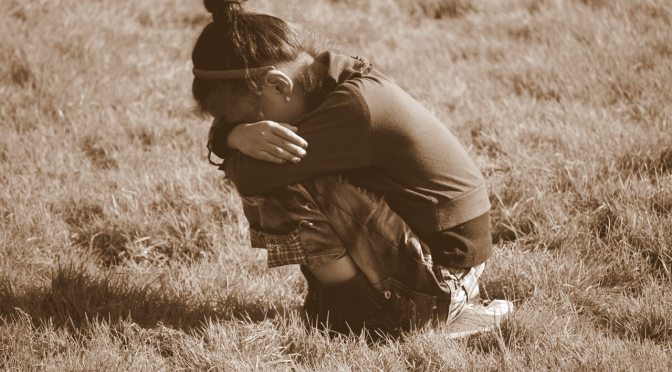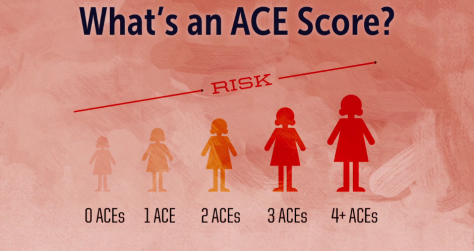.
An Evidence-Based Indictment of Inaction
…Children’s lives hang in the balance
.
Powerful and surprisingly prevalent horrors are blocking access to education and ravaging children’s lives. Sadly, they remain “the elephant in the classroom”: Adverse Childhood Experiences (ACEs).
ACEs include physical, sexual, and emotional abuse [including bullying], physical and emotional neglect, a missing parent [due to separation, divorce, incarceration, or death], witnessing substance abuse, violence, or mental illness in the household, and neighborhood violence and more.
When Developmental (or ‘Childhood’) Trauma after an ACE is unidentified or misunderstood, it can be worsened within school systems, including the School District of Philadelphia (SDP). The US Attorney General and our Surgeon Generals identified children’s exposure to violence and trauma an “epidemic”, a “crisis”, years ago.
Trauma during development is especially heinous.
Some adults normalize the pain and fear of the injured child, thinking “they’ll get over it.” Actually, it’s the opposite. Young children have fewer coping mechanisms and their immature brains are still developing. The impacts of trauma are greater on the architecture of still-developing brain. Science-based evidence is clear.
.

School children deciding to take their own lives are a ‘silent’, but persistent indictment.
.
Trauma impacts children, learning and schools, via its laser-like effects on the physical structure of the brain. Science-based evidence is clear.
Developmental trauma damages cognition. The specific changes to brain architecture impair children’s memory systems, their ability to think, to organize multiple priorities (“executive function”), and hence to learn, particularly literacy skills.
Next, the changes to the trauma-impacted children’s neurobiology also predispose them to hyper-vigilance and suspicion, leading them to misread social cues. Their aggressive, ‘hair trigger’ defenses are often set off by deep fear-memories outside of their explicit consciousness. Science-based evidence is clear.
Adults’ view of students’ seemingly illogical, or oppositional behavior, is often one of shock, confusion, frustration and maybe anger. If we act on our uninformed views, then we risk re-triggering more of the child’s trauma, and even more aggression.
In the spirit of ‘zero-tolerance’, many times schools blame and punish students for logical behaviors connected to their trauma-based injuries.
Punishment can seem appropriate in the moment, but does not address the child’s injury. Instead, the data says, it feeds “the school-to-prison pipeline“.
If schools are to be guided by data, the data says 2 of 3 children experience at least one ACE: children of all incomes, all colors, all social levels, all educational levels. It is all of us. Science-based evidence is clear.
Scientists Felitti/Anda(CDC) have found that even in beautiful, suburban San Diego about one-fourth of middle class, mostly white, college educated, working folks with medical insurance had THREE or more ACEs! Here in north Philadelphia the prevalence is almost double. The lifelong impacts are shocking and alarming.
Three or more ACEs is significant because three+ ACEs correlate with doubled risk of depression, severe obesity, drug abuse, lung disease, and liver disease. It triples the risk of alcoholism, STDs and teen pregnancy.
Three ACEs correlate with a 5X increase in attempted suicide, according to the data.
Nevertheless, most school districts do not train or fund or allocate staff to recognize and respond to the devastating impacts of developmental trauma. Three or four folks on-staff at the district, based downtown at headquarters, is a shameful, inappropriate investment in addressing the massive scourge across a city of more than two-hundred thousand school children.
School-based staff, given insufficient training and resources, can fail to connect children’s developmental trauma to social behaviors, to academic learning, to life decisions. Meanwhile, schools must fight to include in a single counselor in each school ? And so, the crisis continues.
.
All children in the classroom are denied equal access to their education as a result of unidentified developmental trauma, and adult ignorance and inaction.
.
Denied access includes students who are trauma-impacted and then the rest of our students in the same classrooms trying to learn in the midst of frequent chaos around their trauma-impacted peers.
Continuing damage to children’s cognitive functions is only the beginning: Over time, children’s self-confidence disintegrates, further dismantling their learning “results” and the district’s educational mission. Then, trauma-impacted children’s natural, aggressive defenses can skyrocket when uninformed adults miscalculate punitively. All this in context of a “Common Core” and standardized learning, standardized testing and synchronized timing, which are all in direct conflict with education equity for trauma-impacted children (and thus making school-to-school and year-to-year comparisons of “standardized” tests meaningless).
At this point many frustrated learners and families lose trust in their school. All the carnage above , in turn, dissolves public confidence in public education, which finally, in a ‘perfect storm’, destroys public willingness to invest in public education.
Ultimately all of us are damaged by developmental trauma, including all students’ families and the citizens of Philadelphia.
Scarce funds in public education must be re-prioritized toward system-wide, trauma-informed practice in Philadelphia and beyond, driven by a vision of equity, justice and educational process leadership.
.
District leaders must be held accountable for their inaction in the interim. They have clear data and strategies that can help stop further damaging trauma-impacted children.
.
It is time for adults to stand up and indict district leadership.
.
Doing nothing is unethical and morally wrong.
.
Legal remedies may be the only path to equity and justice.
.
Children’s lives hang in the balance.
.
As edited at WHYY / NewsWorks (Click here):
To learn more about the impacts of childhood trauma, click here, here, here or here.
“Like” us at “Trauma-Informed Schools” on Facebook
.
.
.




I agree with the assessment. But as a teachers what do I do? Oftentimes these children are violent, manipulative and needy. How do I protect the other 24-30 children and at the same time de-escalate the dangerous behavior? I often find myself between a rock and a hard place with little training, low support, high expectations, and possible recriminations.
LikeLiked by 1 person
I can offer a starting point to begin training and discussions around how educators can respond differently to these very challenging behaviors, reduce re-traumatization for the child, and reduce “drama” for the entire classroom. This is just a free trng. resource to share with faculty, and begin the process of increasing trauma sensitivity: http://www.ciscentraltexas.org/resources/traumatraining/
This is a 43 minute video that comes with a toolkit for handouts, discussion questions, activities for faculty, and other resources for training. This resource is listed on the ACESConnection.org website.
LikeLiked by 1 person
These resources look great Kris!
LikeLike
I agree it is a difficult place to stand, especially when you feel the environment escalates to a point of being unsafe for you and the other children. I believe training and expectations of classroom management cannot be focused solely on a teacher. Everyone in the entire system needs skills based training in what can be done to de-escalate before the trauma brain is triggered.
I do not believe these children are manipulative or are happy acting out in a violent or needy way. I believe they are in survival mode.Fighting and manipulation has very likely kept them alive. These survival behaviors will very likely “trigger” the adults in places like school. This “triggering” of adults is about the adults themselves going into a trauma brain mode. If a teacher feels unsafe then he/she is likely to go into survival mode, and then the fight is on. So I believe it is about training to gain skills to prevent trauma/survival brain taking over in a child AND training how we as the positive adults can manage our own trauma/survival brain.
~ Dr. Cathy Fialon
LikeLiked by 1 person
“Everyone in the entire system needs skills based training in what can be done to de-escalate before the trauma brain is triggered.”
I could not agree more! Thank you so much for sharing Dr. Fialon
LikeLike
Dear Firstgrademonkey, You have hit upon “the $64,000 question”. There is no short or easy answer that I know of. I would be suspicious of anyone who offers a short simple solution. My beginning thoughts (for discussion) are in the final section of my article: (Nowhere to Hide) “The Elephant in the Classroom”. I would love to hear your feedback re that piece! https://lucidwitness.com/2016/08/08/nowhere-to-hide-the-elephant-in-the-classroom/
LikeLike
Excellent article. I agree with it, but would add some further thoughts: we must address trauma occurring within schools and done by educators, another elephant in the room or out on the field. When parents try to protect their children, oftentimes school admin victim-blame. The re-victimization done to children adds another ACE. Teachers and coaches and school admin need to be very well educated in child abuse: emotional, sexual, physical. They need to be experts. No one should be teaching or coaching without this knowledge.
LikeLiked by 1 person
Thank you for sharing Jennifer! You are right on target. Schools as a ‘source’ of more trauma happens in multiple ways:
“Adults’ view of students’ seemingly illogical, or oppositional behavior, is often one of shock, confusion, frustration and maybe anger. If we act on our uninformed views, we risk re-triggering more of the child’s trauma, and even more aggression.
In the spirit of ‘zero-tolerance’, many times schools blame and punish students for logical behaviors connected to their trauma-based injuries”.
LikeLike
Great information…would love to have seen more discussion regarding the school-to-prison pipeline. These children, our children, eventually reach adulthood and the negative impacts of this unaddressed trauma are exacerbated.
LikeLike
I’m doing professional development presentations in our schools systems now. All school staff should be trauma-informed and aware the effect ACEs has on our children. However, even in a perfect world where we could identify, treat each child individually and bring them to healthiness…we still haven’t taught them how to be better parents. If we are going to work harder to identify and treat ACEs in elementary and middle school then we also need to be following up with parenting and child development education reaching all high school students.
LikeLiked by 1 person
Thank you for sharing Rene! You make a very salient point. ACE impacts must be viewed and supported from a whole family perspective. As you probably know, there is much evidence that ACEs can be (or become) generational.
LikeLike